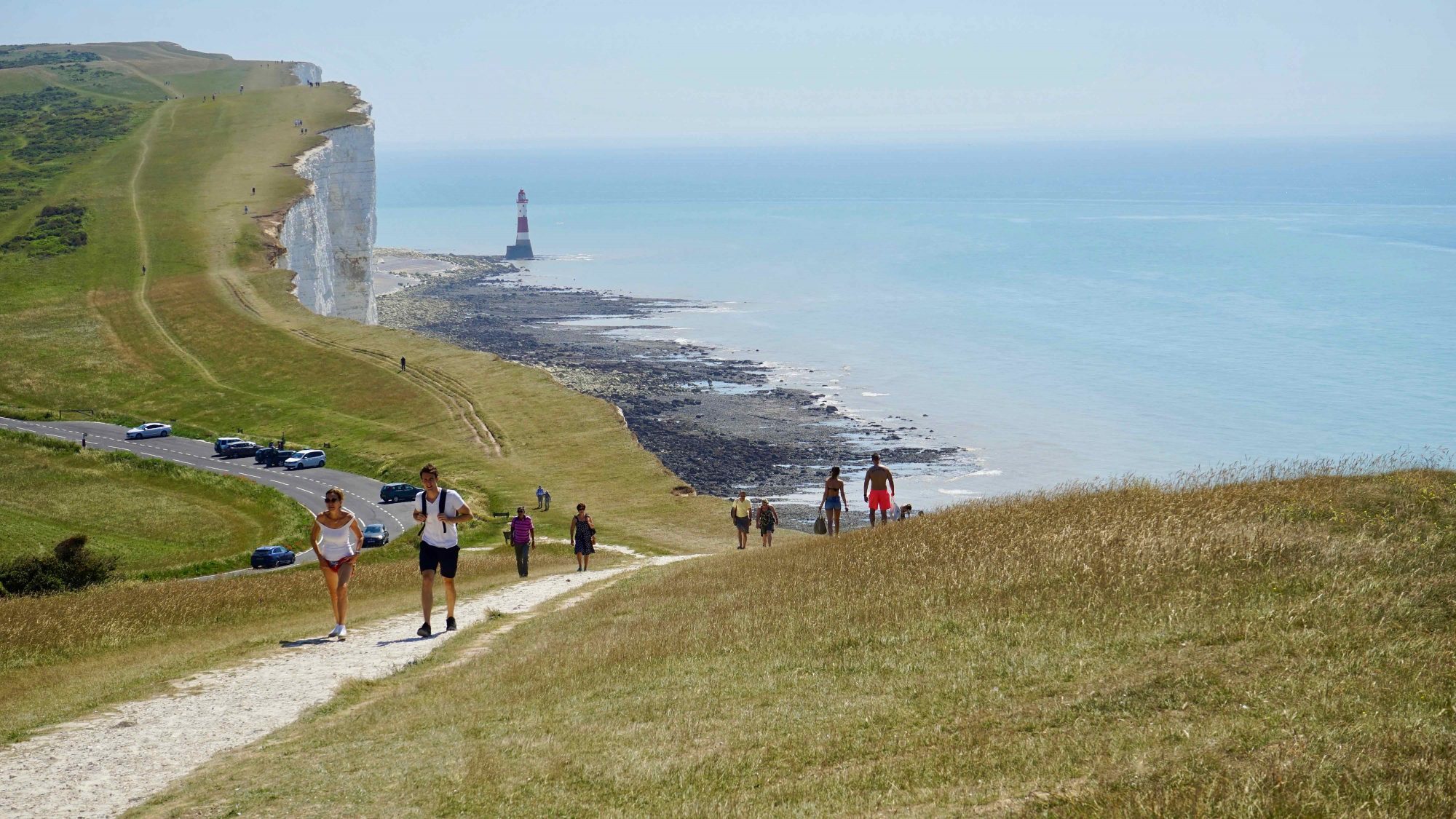Ride on the Roof of a Cable Car
04.05.2024Zermatt is to become the latest mountain resort to offer summer visitors the chance to ascend standing on a ‘balcony’...
Britain is of course home to thousands of marked walking routes as well as cycling and mountain biking routes and there are plenty of long-established horse riding routes (bridleways) too. But sometimes these paths are not enough and we look for something more substantial, a multi-day hike or ride without having to leave our own shores, and that’s when we turn to Britain’s National Trails. So which are Britain’s best long-distance trails?
There are now 15 of these National Trails in England and Wales alone, adding up to around 4,000km of National Trails. Scotland goes even further with more than double the number of English and Welsh paths adding up to around 4,700km of routes.
Add them together and add in Northern Ireland’s additional walks such as the Ulster Way, a 1,000km circular walking route around Northern Ireland, and you’ll soon find you have a lifetime of hiking routes available to you without ever leaving Blighty.
It’s incredible how many miles of pathways are now open to us all. A century ago there were no such routes, but walking in the wild and beautiful parts of Britain became increasingly popular in the early decades of the last century.
Then, after World War II, the desire to keep at least some areas of Britain “unspoilt” and protect them from commercial development led to the establishment of National Parks and of Long Distance Routes (now called National Trails in England and Wales). The first trail, the Pennine Way, opened a little over 50 years ago in 1965, and all the others have followed since.
And the network is still growing. The first stages of the new England Coast Path, which will be the longest National Trail yet and, indeed, the longest managed and waymarked coastal path in the world when it is complete in 2020, are already open. By 2020 the path will be an incredible 4,500km in length – so, quite a challenge.

The length of these routes means they should not be undertaken lightly. Many cross land that’s as far from “civilisation” as it’s possible to get in the UK, including exposed high mountain and moorland. So it’s important to be fit and fully prepared when you set out. Many people begin by simply doing sections of a longer trail rather than trying to do it all at once.
Camping along the route is a popular way to find an overnight place to stay, but there are also hostels, hotels and even, on some routes, companies that will transport your baggage from hotel to hotel for you along the route, so you can walk blissfully unencumbered past those struggling under heavy rucksacks if you wish to pay for their services.
All the National Trails are of course open to walkers, some (such as the Norfolk Coast Path) exclusively so. Many have sections that are walker-only and sections where bikes and horse riders are allowed – sometimes taking a separate route to walkers on the same path. Horse riders can, however, particularly enjoy the Pennine Bridleway, Peddars Way and the South Downs Way, as well as sections of the other trails.
Until the England Coast Path is complete in 2020 the South West Coast Path is arguably Britain’s longest. Those in the know advise active walkers to allow “30 days of fast walking” to complete the path which runs between Minehead in Somerset and Poole in Dorset. Those who prefer a more leisurely pace should set aside six to eight weeks!

The Ulster Way in Northern Ireland is just eight kilometers shorter, and an “unofficial route” in Scotland known as the Scottish National Trail, which has been devised by outdoors writer and broadcaster Cameron McNeish, is about 907km long and runs the length of Scotland from Kirk Yetholm in the south to Cape Wrath in the north.
The Pennine Way, Britain’s original National Trail, running 431km up the rugged backbone of England to Kirk Yetholm on the Scottish border, remains the country’s most popular trail. It is believed to attract around 12,000 long-distance walkers and about a quarter of a million day-walkers each year. En route from its starting point in Edale, in the northern Derbyshire Peak District, it travels north through the Yorkshire Dales and the Northumberland National Park. It normally takes 16–19 days to complete.
In Scotland the West Highland Way, which runs nearly 240km from Milngavie on the edge of Glasgow at its south end to Fort William at the foot of Britain’s highest mountain, Ben Nevis, in the north, is the most popular route.
The John o’ Groats Trail is described as a “work in progress” by Walkhighlands. At nearly 240km long, the route from Britain’s most northerly city, Inverness, up to the most northerly point at John o’ Groats aims to provide a vital missing link for Land’s End to John o’ Groats walkers. The route is currently “unofficial”, Walkhighlands notes, with only a few makeshift markings, no formal path and a route that is rough and challenging. It can be divided into around 14 day-long sections.
A number of trails follow historical features or events. It’s possible to walk Hadrian’s Wall over about seven days, between Wallsend in Tyne and Wear and Bowness in Cumbria, a distance of 135km, for example.
Glyndŵr’s Way was granted National Trail status in 2000 to mark the beginning of the third millennium and the 600th anniversary of an ill-fated but nevertheless long-running rebellion in 1400. Its name derives from the early-15th-century Welsh prince and folk hero Owain Glyndŵr. The 217km route takes you through rolling farmland, open moorland and forests and past lakes and reservoirs, and allows you to re-live the adventures of Owain Glyndŵr; it should take about nine days to complete.

Another route, the Offa’s Dyke Path, roughly follows the current border between England and Wales; it is named after the huge earthwork named after Offa, the Anglo-Saxon king of Mercia from AD 757 until 796, who is traditionally believed to have ordered its construction. The path runs for 285km from the south coast to the north coast of Wales and takes about a fortnight to walk.
Long-Distance Routes in England and Wales: nationaltrail.co.uk
Long-Distance Routes in Scotland: walkhighlands.co.uk
Long-Distance Routes in N Ireland: walkni.com
Enjoyed this article? click here to get more from us
Zermatt is to become the latest mountain resort to offer summer visitors the chance to ascend standing on a ‘balcony’...
Exploring the Alpine Charms of SalzburgerLand As tradition dictates, the Austrian province of SalzburgerLand welcomes the arrival of Almsommer (Alpine...
A network of 12 new cycling routes and film have been launched on the Yorkshire Coast to help visitors create...
Trentino, the northern Italian region, is a cycling paradise with numerous routes that challenge even the most hardcore of cyclists....